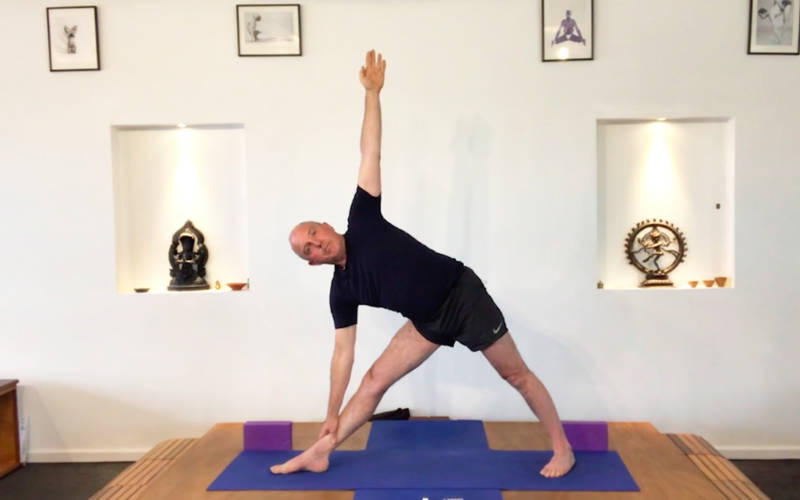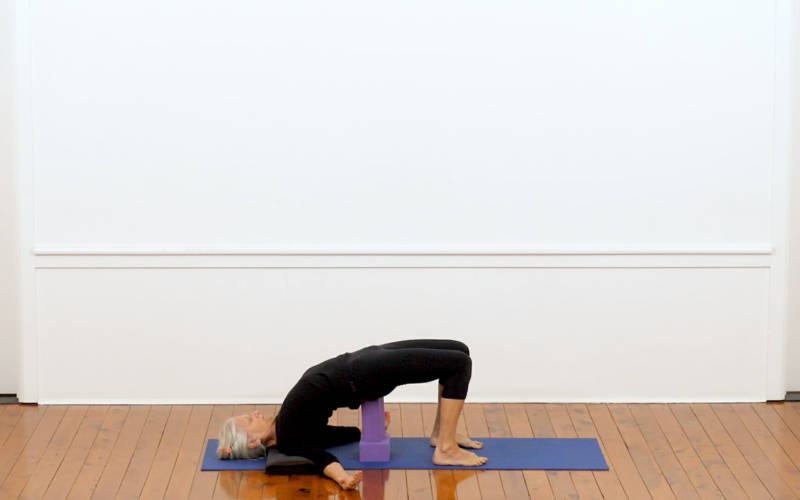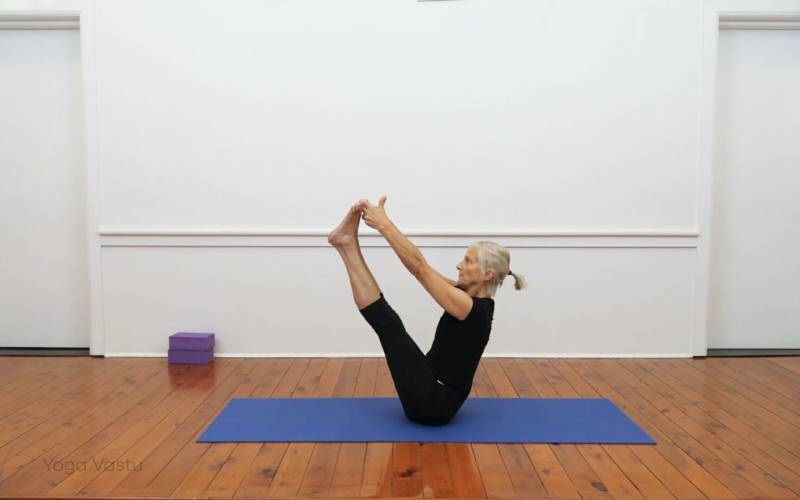How to perform Four-Limbed Staff Pose
Start in plank, with your back straight, hands right below the shoulders. As you exhale, bend your elbows and shift forward and down so that your body is parallel to but not quite touching the floor.
What is Chaturanga Dandasana?
Chaturanga Dandasana is a pose typically used in Vinyasa sequences. You start in Plank Pose, your hands below your shoulders, your arms strong and extended. As you exhale, you bend your elbows and shift forward and down until your body is balanced in a parallel line over the floor. All the while your whole body remains straight as a staff. Your shoulders and chest are maximally open.
This action strengthens your whole upper body, especially the wrists, shoulders, and upper back. This makes it an essential pose for any yoga student aiming to move on to more advanced asanas.
When to use Chaturanga Dandasana?
This posture is very similar to the traditional push-up and, just like the push-up, it is typically used very transiently, in a flowing sequence. Most typically it appears in the following mini-sequence: Adho Mukha Svanasana, Plank Pose, Chaturanga Dandasana, and Urdhva Mukha Svanasana. This combination provides the practitioner with an all-round shoulder strengthening exercise. It represents a very even flow that alternates between the tensing and release of the shoulder and upper chest area.
This pose is often taught early on as it offers the student a manageably strenuous way of laying all the necessary foundations for a successful yoga practice, strengthening the core and training a sense of balance. Moreover, it promotes focus and concentration since it requires the student to keep an eye on the position of the whole body: the middle should stay balanced evenly over the floor without caving in. The shoulders and chest should initially be forced open, as the path of least resistance will lead the inexperienced student to droop, rather than lower down with control.




